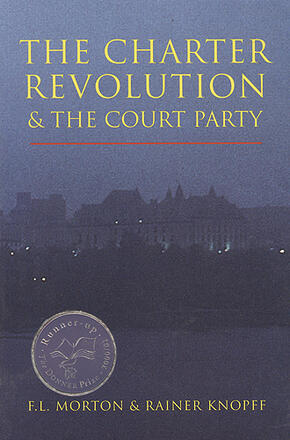
The Charter Revolution and the Court Party
La description
The Charter of Rights has transformed Canadian politics. The Supreme Court has used the Charter to change government policy on an ever-expanding list of controversial issues—abortion, aboriginal rights, gay rights, bilingualism, criminal law enforcement, and prisoner-voting. The Court has made itself the second most powerful institution in Canadian politics after the Federal Cabinet. Morton and Knopff demonstrate that the Court is not so much the cause as the means by which the Charter Revolution has been achieved. Behind the judges is a well orchestrated network of state-funded interest groups that use litigation and the media to achieve what they can’t win through democratic elections.